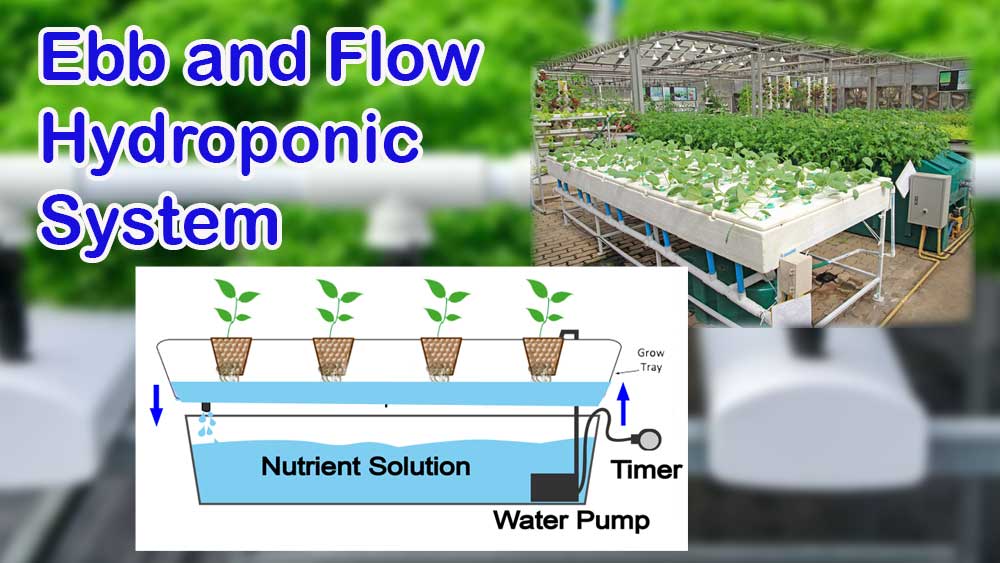
Hydroponic farming now has become more popular all around the world due to its profitability and quality of the products. There are different types of hydroponics systems from which you can select the best and the convenient method for your farm. Of these different types today, we are going to focus on the Ebb and Flow Hydroponic System. This is the most effective and simple system among other hydroponic systems. So, most hobbyists and commercial growers use this method.
What is this Ebb and Flow Hydroponic System?
In this system nutrient solution is periodically flooding and draining within this system. There is no constant connection between the crop and the nutrient solution similar to most of the other hydroponic systems. So, this is called as ebb and flow or flood and drain hydroponic system. There are two phases known as flood and drain in this operation. When nutrient and water flow through the root areas called as flood. Then water come back to the water source called as drain. These two incidences are happening continuously within the system.
Containers series or a container is in this system. The plants are grown on a growing tray. Water pumping cycle is controlled from a timer.
Nutrients and water pump according to the timer. The submersible fountain pump is used to pumping. Then nutrients and water pump to the upper container and soak the plant’s root. This is happening until reach the limit of water. After setting the solution level, it continuously circulates within the system. Over flow tube is used to keep or maintain the recommended water level.
During the circulation the solution can spill out. So, there is a tube avoids that. Solution flowing is stopped when the timer goes off and pump is stopped. Then start to drain back to the water source from the drainage system. If oxygen content in the water source is not adequate, air should supply from an air pump.
There are two main parts in this system. One is water source (reservoir) and other one is container (plant tray).
There are different types of ebb and flow hydroponic systems
Containers in series design
In here, number of containers are connected to one tube. So, the solution goes through all containers and equally maintain water level before drain to the water source again. The major difference in here is, there is lot of containers. At the same time, pumps flood with solution in all containers evenly. Water source should lower than the position of containers. In this method, the solution flows back to the water source by the gravity force. The overflow tube height system, the surge tank ebb and flow and the ditch bucket are some famous designs of this system.
Flooding tray design
This design differs from other designs. In here, there is only one container. At the top surface structure has a squared tray or a shallow rectangular. Water source is below the container. Plastic bucket use to grow plants and it is placed in the flooding tray. Suitable growth media is contained in the bucket. Height of water within the container is control by the overflow tube. It is easy to transport.
This system has both advantages and disadvantages.
Advantages of Ebb and Flow Hydroponic System
The cost for build this system is very low. Because all materials are very affordable. Also, there is no requirement of expert knowledge to build this. Other advantage is, it is easy to use. So, it can do with less maintenance and supervision.
Disadvantages of Ebb and Flow Hydroponic System
When water is over flow, plants are flooded. Then Ph level is varied and it create toxic environment to plant growth and the production losses are happened. It is badly affected to the farmer. If any small mistake id happened, whole system can be break down and stop the functioning. So, when build the system it should do carefully.
Ref:
Modern Farming , Farming – https://www.sudufarming.com